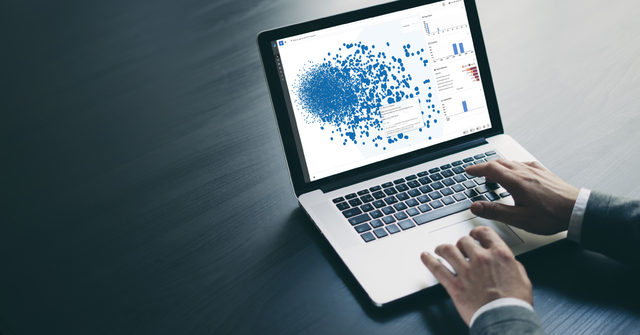
Blog
The latest developments in Luminance’s AI-powered eDiscovery platform
4 June 2021 | Luminance
Earlier this year, Luminance introduced a range of new product updates to revolutionise its eDiscovery platform. As the leading AI platform currently used by over 300 customers worldwide, this latest upgrade is set to redefine the eDiscovery landscape, with powerful new features such as conceptual search, auto-identification of Personally Identifiable Information (PII) and bulk redaction, as well as an upcoming pioneering 3D communications visualiser.
Luminance Discovery: transforming the eDiscovery landscape
Since its launch in 2018, Luminance Discovery has fast established itself as a market-leader in the AI-powered eDiscovery sphere with customers that include the world’s largest law firm, Dentons, a leading UK supermarket and the ‘Big Four’ professional services firms.
Powered by a unique blend of supervised and unsupervised machine learning, Luminance is able to instantly read and form an understanding of mixed-format datasets, displaying the results of its analysis across a number of interactive 3D visualisations. Crucially, Luminance is able to do this without the need for lengthy rule creation, and the intuitive interface means customers are up and running within hours, with no user certification required, conducting the most rigorous and efficient review possible.
Luminance’s powerful conceptual search tool
AI-powered Early Case Assessment ensures that litigators are able to delve deeper into their vast datasets and unearth key documents faster. Luminance’s existing search tools- which include deduplication and email leafing- are vital for teams looking to cull irrelevant data. Indeed, UK Top 50 law firm, Burness Paull, were able to reduce their dataset by 80% compared to its original size in a matter of minutes using Luminance’s data culling and search tools.
Luminance’s new update takes ECA a step further with advanced search functionalities which allow legal teams to conduct more sophisticated queries of their documents. This includes the revolutionary capability to surface conceptually similar results during a search. For instance, if I were looking at emails and wanted to find examples of the word ‘employee’, Luminance would also be able to identify all conceptually-similar examples such as ‘executive’. This conceptual understanding provides a logical and thorough method of getting to the heart of a case- for instance, if I were to find an email that contains key information, by selecting Luminance’s ‘find similar’ search button, Luminance is able to rapidly identify all of the documents within the dataset which are conceptually similar. This is gamechanging for lawyers, saving them from trawling through mounds of data and allowing them to identify the needle in the haystack at a much earlier stage in their review.
Luminance has also introduced wildcard searching, meaning that should the user search for a term like ‘employ’, Luminance would also be able to identify all examples that contain the root word and any additional letters such as ‘employment’, employee’ or ‘employer’. This powerful new feature ensures that nothing is overlooked in a review and is vital for litigators and legal teams handling huge datasets.
Rethinking redaction with Luminance Discovery
Data privacy legislation like the General Data Protection Regulation (GDPR) and the California Consumer Privacy Act (CCPA) are placing increasing pressure on firms to protect personal information or risk incurring a huge financial penalty. Luminance is now able to automatically highlight Personally Identifiable Information (PII) including party names, email addresses, bank details, passport numbers and social security numbers- critical for litigators who do not wish to contravene data privacy legislation by sharing personal information with a third party during a disclosure or when responding to a Data Subject Access Request (DSAR).
With Luminance v5.1, users also have the option use Luminance’s powerful bulk redaction tool to fully redact information across the documents in a matter of clicks, drastically reducing overall review time. For lawyers conducting a DSAR where they must only identify information relating to the subject and no other third party information, Luminance has introduced a new a feature that empowers lawyers to ‘inverse redact’ – i.e. redact all information that is not personally identifiable. This is vital for a speedy, compliant DSAR review.
Communications Visualiser
Currently in development, Luminance’s Communications mode aids ECA by giving reviewers an even faster understanding of their data set. A 3D visualisation of email traffic and threads of communication between individual senders and recipients of emails, this tool will prove essential for users who want to zero-in on certain threads of communication. For instance, if they see an email communication between two respondents that look of interest and want to visually see all examples of this communication and over what period, Luminance is able to surface this in one click.
At the forefront of innovation
Trusted by 300 organisations globally, Luminance’s technology is the market leader in the AI space. With Luminance’s new update to the Discovery platform, legal teams are empowered to conduct the most efficient and thorough investigation possible.
To watch a demonstration of the new updates, please click this link.